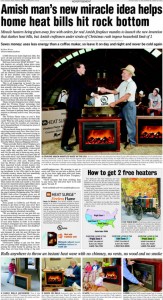The Unique Selling Proposition is the attribute that makes your product or service different from any other, at least in the way you describe it. The USP can be a powerful weapon once you know your product and you know the audience’s needs or desires: now you have the opportunity to present the sole solution that gives them exactly what they want.
Every now and then you come across a product that truly is unique… durian, anybody? But often the USP is a matter of a clever marketer identifying a product attribute that’s unique and then blowing that up until it becomes an identity for the brand. Example: M&Ms melt in your mouth… not in your hands. The Mars company found during WWII that sailors in the South Pacific preferred them to Hershey Bars because they didn’t melt in the sun, and turned that into a brand identity.
Jerry Della Femina, who had a successful agency in Los Angeles when I was getting my start in the business, used to run a great long copy ad in the local Adweek about the “Capo D’Astra Bar”. Seems he was a cub copywriter hired to a backwater piano account and went to learn about the client’s product at their remote upstate NY factory. The client kept saying “all pianos are pretty much the same” till Della Femina crawled under the piano and noticed a heavy band of metal across the bottom.
“Oh, that’s the capo d’astra bar, and I guess it is unique” the client said and it reminded him of the time that they’d had to knock out the wall at Carnegie Hall to install their pianos by crane, because the capo d’astra bar made them too heavy to go up the elevator. Carnegie Hall?? “Oh, didn’t I tell you, all the pianos at Carnegie Hall are our brand.” And thus was born the campaign for Steinway, the official piano of Carnegie Hall, with a resourceful copywriter digging deep to find a USP.
In a competitive market, especially for parity products (example: credit cards), finding a USP can be challenging. Sometimes it’s good enough to claim the high ground with a benefit statement so clearly stated that any competitor who says “wait a minute, we have that too” will look foolish. (You never heard Reese’s Pieces say “we don’t melt either.”) Also, remember that your competition is not restricted to competitors; it also includes doing nothing or doing without. A powerful USP will be good enough to overcome that inertia.
With this post we’re back to my series based on the “Copywriting that Gets Results” class I teach for the Direct Marketing Association. Visit the Copywriting 101 category to see them all.

